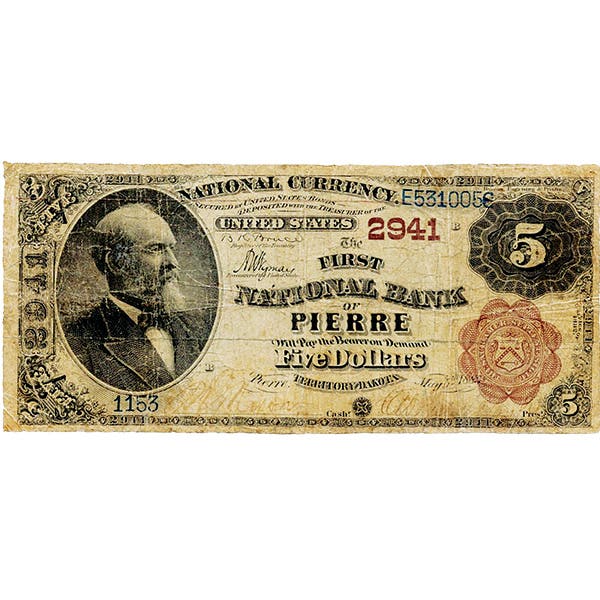Reader’s Showcase: Grange notes popular but difficult pursuit
By Peter Huntoon Notes issued by the Grange national banks of Pennsylvania always have been a popular but difficult pursuit by determined collectors. The Grange movement, founded after the Civil…
By Peter Huntoon
Notes issued by the Grange national banks of Pennsylvania always have been a popular but difficult pursuit by determined collectors.
The Grange movement, founded after the Civil War in 1867, was officially organized as The National Grange of the Order of Patrons of Husbandry. It was a fraternal agricultural organization that fought for economic and political welfare of farmers. It remains the oldest American agricultural advocacy group with a national scope.
The key issues that they fought against were predatory railroad tariffs and grain elevator commodity pricing. Many Granges operated their own grain elevators. Their advocacy also was instrumental in the establishment of rural free mail delivery.
A dozen Grange national banks were organized in Pennsylvania between 1906 and 1908, all in medium to small towns. The toughest to collect are the notes from The Grange National Bank of Clarion County at Sligo, which had by far the smallest issuance; specifically, a total of only 961 sheets of 5-5-5-5 and 10-10-10-20 1902 Red Seals and Date Backs.
The penned-signed Date Back $10 illustrated above, which bears sheet serial 81, is the only reported survivor, a note brought in by Jess Lipka. The note is signed by J.B. Morrison, president, and Roy Edgar, cashier.
One thing that makes Grange notes from this bank so scarce is that the bank was renamed The Sligo National Bank on Feb. 21, 1913, thus restricting its Grange title to the 1907 and 1913 period.
This article was originally printed in Bank Note Reporter. >> Subscribe today.
More Collecting Resources
• The Standard Catalog of United States Paper Money is the only annual guide that provides complete coverage of U.S. currency with today’s market prices.
• Any coin collector can tell you that a close look is necessary for accurate grading. Check out this USB microscope today!









